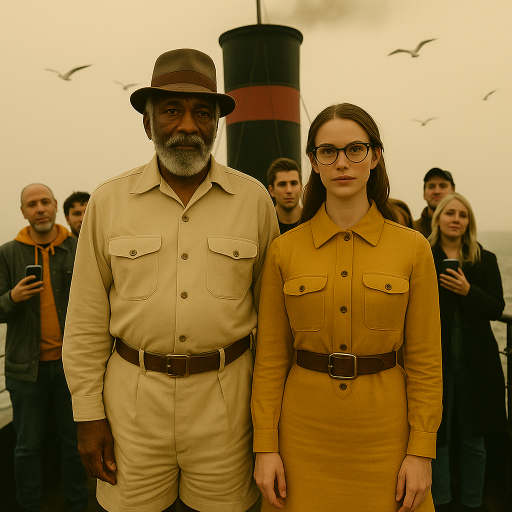Field Note: An Orderly Passage Across the Inland Divide
Filed by: [Name Redacted], Concordant-in-Transit
Location: Aboard the S.S. Badger, Mid-Lake Passage between Manitowoc, WI and Ludington, MI
Date: Aligned Ledger Entry 72.5, Concord Session Unnumbered
Under skies described by the Deck Register as “seasonally stable,” a selected triad of Concordants boarded the S.S. Badger, the historic coal-fired car ferry that has plied the waters of Lake Michigan since 1953. Departing from Manitowoc, Wisconsin, the Order’s intention was not automotive nor touristic, but archival: the pursuit of a rumored Hollow Compass installation thought to reside somewhere aboard the vessel—perhaps even still embedded within or beneath the original helm structure.
The S.S. Badger, a National Historic Landmark and the last coal-fired passenger vessel operating on the Great Lakes, continues its daily 60-mile passage to Ludington, Michigan, carrying both commercial freight and folklore across the inland sea. It was during this precise passage that the Concordants sought to determine whether remnants of early Order intervention—specifically a Hollow Compass prototype believed to have been installed during retrofits in the 1960s—could still be located, examined, or at the very least, gestured toward discreetly.
The mission’s provenance originates with an undated field letter referencing “a directional core installed in gratitude for safe eastbound passage, its needle reluctant to acknowledge the prescribed axis.” Whether poetic metaphor or genuine relic placement, the suggestion was too aligned with prior occurrences to ignore.
Initial impressions aboard were promising. The vessel retains much of its mid-century design: riveted steelwork, brass hardware, mechanical signage, and a lingering olfactory cocktail of coal, diesel, and lemon disinfectant. Our members, dressed respectfully yet identifiably, kept to observation decks and the starboard café for the first portion of the voyage, armed only with leather-bound field journals, vintage optics, and laminated credentials from the defunct “North Coast Symbolic Cartography Institute.”
Approximately 2.3 hours into the four-hour crossing, an exploratory attempt was made toward the restricted upper stairwell leading to the bridge. Posing as part of a navigational heritage project, Concordant [Redacted] inquired about “legacy compass installations still in use,” which drew a raised eyebrow and the response, “This isn’t the Smithsonian, pal.”
Simultaneously, another Concordant made a stealthy attempt to photograph the interior of the wheelhouse from the upper deck through angled glass. The resulting image was obstructed by sun glare and a suspiciously positioned Styrofoam coffee cup—rendering any Hollow Compass verification inconclusive.
A polite but unmistakable request to return to the passenger areas followed.
Outcome
While no definitive Hollow Compass artifact was identified, the passage reaffirmed the Order’s longstanding belief: some truths remain visible only in motion, and some relics choose when—and to whom—they reveal themselves.
Further observation may be warranted under different lighting, fewer passengers, or with improved credentials.
